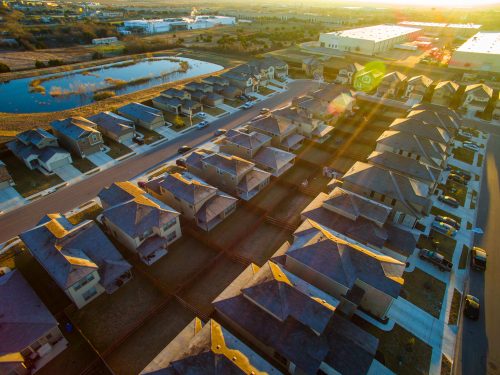
Community-Scale Solar Costs: 3 Reasons to Take Heart
Solar PV installations had a banner year in 2016, and market participants, analysts, and investors took stock of the results, including installed costs and forward-looking price projections. While many studies show the cost of solar continuing to decline, our analysis and field experience suggest that evaluators continue to be overly cautious about opportunities for future cost reduction, especially in community-scale installations (e.g., 1–5 MW).
We recognize the solar industry has run into some headwinds that may sow seeds of doubt, but our view is that the industry is set to continue to deliver aggressive cost reductions for the foreseeable future. We base this somewhat contrarian view on the work we have done in community-scale solar in two distinct locations—sunny New Mexico and not-so-sunny Rochester, New York—as well as on a more detailed analysis of the cost-reduction levers available to this sector. Our findings suggest three key areas that should increase potential buyers’ appetite to take advantage of the benefits of solar energy.
1. Reported average prices do not dictate actual local pricing
Average levelized cost of energy (LCOE) pricing necessarily blends large data sets from across regions that do not reflect best-in-class opportunities. In reality, the distributed solar market is characterized by opaque pricing and nonstandard offerings that hamper comparisons and often hide margins. As a result, many buyers pay more than they should for solar. For example, in a recent RMI-managed request for proposal (RFP) in New Mexico, the median PPA price for a long-term PPA was $80/MWh. However, 25 percent of the bids were below $55/MWh, and the lowest bids were below $50/MWh. In order to get the lowest possible prices and highest value available in your region, we recommend using a robust, competitive RFP process.
2. Distributed solar can compete on costs with large-scale solar
Historically large-scale (i.e., utility-scale) solar has had a distinct cost advantage over distributed solar PV, leading to skepticism of the role of distributed solar. In reality, community-scale solar can achieve prices comparable to utility-scale solar. Recent reports suggest a LCOE (with the investment tax credit) of ~$60 to $110/MWh for community-scale solar, compared with ~$40 to $50/MWh for utility-scale solar, representing a cost premium for community-scale solar of between 60 percent and 120 percent. But our recent analysis and experience suggest that much lower costs can be achieved as developers and installers improve operations and tighten up their processes, similar to what has happened in more mature industries. For an RMI-managed procurement of community solar in New Mexico, RFP costs came in under $50/MWh.
When efficient developers and construction firms can dispatch crews from site to site within a portfolio, they reduce development costs and overhead in a way that brings community-scale capital expenditure costs in line with utility-scale costs even before distributed benefits are captured.
3. Solar costs can continue to decline
Not surprisingly, many analysts suggest that solar prices are leveling out and won’t fall much further. On the contrary, we believe that significant and sustained cost reductions are still obtainable. Our detailed analysis of the available cost-reduction levers suggests that solar PV prices will continue to decline to a point where even without subsidies, they will beat the price of energy generation and transmission based on fossil fuels.
The key to this continued cost reduction is a standardized solar PV product and business model designed for the distribution grid that avoids transmission costs, lowers labor costs, enables low-cost financing, and captures distributed benefits. We believe that many investors and market participants are missing this opportunity because they have an incremental view of the opportunities rather than the whole-system perspective that is required to achieve step-function and continuous cost reductions for years to come.
A BUYER’S MARKET
Even though prices are declining, now is a great time to procure solar. Purchasing solar now will help buyers capture immediate savings, gain experience with solar and distributed generation, and take advantage of favorable market dynamics.
The rapid decline of solar costs has opened up exciting opportunities for widespread adoption of solar. The best way to test the market and find the up-to-date price in a region isn’t to read reports, but to issue competitive solicitations or RFPs. Doing so will provide valuable insight into current prices and market dynamics that can inform a decision to proceed with a project and strategies for the future. These RFPs are most effective when they attract multiple regional and national developers and when they solicit bids that are easily comparable.
There is also much more than cost to consider when purchasing solar. Right now it’s a buyer’s market for solar, and organizations from Google to Kit Carson Electric Cooperative are on the path to 100 percent renewable energy. These organizations recognize that in addition to renewable energy being low cost, it also offers value in the form of lower exposure to volatile energy prices, local economic development, and environmental benefits.